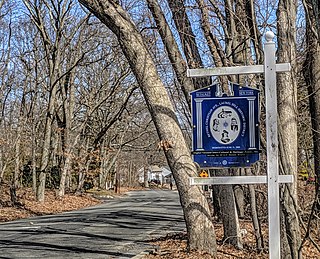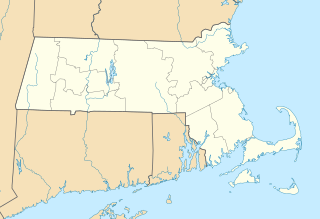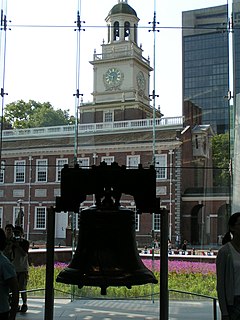 W
WBeacon Hill is a historic neighborhood in Boston, Massachusetts, and the hill upon which the Massachusetts State House resides. The term "Beacon Hill" is used locally as a metonym to refer to the state government or the legislature itself, much like Washington, D.C.'s "Capitol Hill" does at the federal level.
 W
WChestnut Hill is a neighborhood in the Northwest Philadelphia section of the United States city of Philadelphia, Pennsylvania. It is known for the high incomes of its residents and high real estate values, as well as its private schools.
 W
WThe Chestnut Street District is a historic district bounded roughly by Bridge, Lynn, Beckford, and River Streets in Salem, Massachusetts. It was added to the National Register of Historic Places in 1973 and enlarged slightly in 1978. The district contains a number of architecturally significant works of Samuel McIntire, a builder and woodworker who had a house and workshop at 31 Summer Street, and who designed and built a number of these houses, and others that display the profits made in the Old China Trade by Salem's merchants. The district is a subset of a larger locally designated McIntire Historic District.
 W
WThe designation of the oldest church in the United States requires careful use of definitions, and must be divided into two parts, the oldest in the sense of oldest surviving building, and the oldest in the sense of oldest Christian church congregation. There is a distinction between old church buildings that have been in continuous use as churches, and those that have been converted to other purposes; and between buildings that have been in continuous use as churches and those that were shuttered for many decades.
 W
WBethel-Christian Avenue-Laurel Hill Historical District is a Setauket, Long Island, New York neighborhood that was nominated for preservation as an endangered historic site in 2017.
 W
WHistoric districts in the United States are designated historic districts recognizing a group of buildings, properties, or sites by one of several entities on different levels as historically or architecturally significant. Buildings, structures, objects and sites within a historic district are normally divided into two categories, contributing and non-contributing. Districts greatly vary in size: some have hundreds of structures, while others have just a few.
 W
WFlight of the Red Tail is a 2009 historical documentary film by Adam White about the Red Tail Project's successful return to flight of a World War II P-51 Mustang. The plane had been originally flown by the United States Air Force 332d Fighter Group as a bomber escort for the Allied Forces in the European Theatre of World War II and serves as a travelling and flying tribute to the Tuskegee Airmen. It had become inoperable during a 2004 crash after having been restored for exhibition flying once before in 2001. The Red Tail Project is a part of the Commemorative Air Force. The film is a sequel to Red Tail Reborn which brought attention to the attempt to relaunch of the plane after the 2004 crash.
 W
WThe Guy and Margaret Fleming House, also known as Torrey Pines Reserve Ranger Residence, is a historic house in the Torrey Pines State Reserve, California. It was added to the National Register of Historic Places in June 1998.
 W
WThe Hess Homestead, in Lancaster County, Pennsylvania, is a historic Mennonite farmstead near the town of Lititz. The property is an ancestral home of the Hess family, who purchased the land from William Penn's sons in 1735.
 W
WThe Isaac Crocker Homestead is a historic home and farm in Marstons Mills, Massachusetts, built circa 1750. The 6.5-acre (2.6 ha) property, located at 330 Olde Homestead Drive, includes an historic house, adjoining barn and grain silo. The silo is unusual for being made out of wood. In 2007, the property was listed as one of the Ten Most Endangered Historic Resources in Massachusetts.
 W
WThe Ladies' Mile Historic District was a prime shopping district in Manhattan, New York City at the end of the 19th century, serving the well-to-do "carriage trade" of the city. It was designated in May 1989, by the New York City Landmark Preservation Commission to preserve an irregular district of 440 buildings on 28 blocks and parts of blocks, from roughly 15th Street to 24th Street and from Park Avenue South to west of the Avenue of the Americas. Community groups such as the Drive to Protect the Ladies' Mile District and the Historic Districts Council campaigned heavily for the status.
 W
WThe List of notable addresses in Beacon Hill, Boston contains information, by street, of significant buildings and the people who lived in the community. Many of the street names have changed. For instance, Phillips street was once called Southack Street.
 W
WLouisburg Square is a private square located in the Beacon Hill neighborhood of Boston, Massachusetts that is maintained by the Louisburg Square Proprietors. While the Proprietors pay taxes to the City of Boston, the city does not own the square or its garden. It was named for the 1745 Battle of Louisbourg, in which Massachusetts militiamen led by William Pepperrell, who was made the first American baronet for his role, sacked the French Fortress of Louisbourg.
 W
WLüchow's was a restaurant located at 110 East 14th Street at Irving Place in East Village in Manhattan, New York City, with the property running clear through the block to 13th Street. It was established in 1882 – at a time when the surrounding neighborhood was primarily residential – when a German immigrant, August Lüchow, purchased the cafe where he worked as a bartender and waiter. Lüchow's remained in operation at this place for a full century, becoming a favorite establishment for people in the entertainment world, helped by its proximity to the Academy of Music, the city's opera house, as well as Steinway Hall and Tammany Hall, where other entertainment was offered.
 W
WMission 66 was a United States National Park Service ten-year program that was intended to dramatically expand Park Service visitor services by 1966, in time for the 50th anniversary of the establishment of the Park Service.
 W
WThe United States National Cemetery System is a system of 169 nationally important cemeteries in the United States. The authority to create military burial places came during the American Civil War, in an act passed by the U.S. Congress on July 17, 1862. By the end of 1862, 14 national cemeteries had been established. A national cemetery is generally a military cemetery containing the graves of U.S. military personnel, veterans and their spouses, but not exclusively so. The best known national cemetery is Arlington National Cemetery in Arlington County, Virginia, outside Washington, D.C.. Some national cemeteries, especially Arlington, contain the graves of important civilian leaders and other important national figures. Some national cemeteries also contain sections for Confederate soldiers. In addition to national cemeteries, there are also state veteran cemeteries.
 W
WA National Heritage Area is a site designated by United States and intended to encourage historic preservation of the area and an appreciation of the history and heritage of the site. There are currently 55 National Heritage Areas, some of which use variations of the title, such as National Heritage Corridor.
 W
WA National Historic Landmark (NHL) is a building, district, object, site, or structure that is officially recognized by the United States government for its outstanding historical significance. Only some 2,500 (~3%) of over 90,000 places listed on the country's National Register of Historic Places are recognized as National Historic Landmarks.
 W
WThe National Historic Preservation Act is legislation intended to preserve historic and archaeological sites in the United States of America. The act created the National Register of Historic Places, the list of National Historic Landmarks, and the State Historic Preservation Offices.
 W
WNational Historic Site (NHS) is a designation for an officially recognized area of national historic significance in the United States. An NHS usually contains a single historical feature directly associated with its subject. A related but separate designation, the National Historical Park (NHP), is an area that generally extends beyond single properties or buildings, and its resources include a mix of historic and later structures and sometimes significant natural features.
 W
WNational memorial is a designation in the United States for an officially recognized area that memorializes a historic person or event. As of September 2020 the National Park Service (NPS), an agency of the Department of the Interior, owns and administers thirty-one memorials as official units and provides assistance for five more, known as affiliated areas, that are operated by other organizations. Congress has also designated twenty additional independently operated sites as national memorials. Another six memorials have been authorized and are in the planning stage. Memorials need not be located on a site directly related to the subject, and many, such as the Lincoln Memorial, do not have the word "national" in their titles. There is a degree of overlap in development of some areas designated as memorials, monuments, and historic sites, and their characterization is not always consistent with their names, such as whether the site is closely associated with whom it memorializes.
 W
WNational Military Park, National Battlefield, National Battlefield Park, and National Battlefield Site are four designations for 25 battle sites preserved by the United States federal government because of their national importance. The designation applies to "sites where historic battles were fought on American soil during the armed conflicts that shaped the growth and development of the United States...."
 W
WThe Orange County Regional History Center is a private non-profit history museum located in downtown Orlando, Florida, United States. Located in the historic Orange County Courthouse, the five-story museum consists of exhibits presenting local and regional history starting from 12,000 years ago.
 W
WPreservation Park is located in Oakland, California. The park includes sixteen historic buildings, five of which stand in their original location, and eleven of which were moved from elsewhere in Oakland to avoid demolition. The sixteen houses are arranged to resemble a late 19th-century Oakland neighborhood.
 W
WPreservation Pittsburgh is a non-profit advocacy group founded in 1991 to support the preservation of historic, architectural, cultural, and environmental sites and buildings within Pittsburgh, Pennsylvania.
 W
WPreserve America is a United States government program, established under President George W. Bush, intended to encourage and support community efforts to preserve and enjoy the country's cultural and natural heritage.
 W
WThis is a list of United States municipalities, counties, neighborhoods, and tribal communities that have been designated as "Preserve America Communities" under the federal government's Preserve America program. As of 2017, more than 900 communities, representing all 50 states and two U.S. territories, had been so designated.
 W
WSave America's Treasures is a United States federal government initiative to preserve and protect historic buildings, arts, and published works. It is a public–private partnership between the U.S. National Park Service and the National Trust for Historic Preservation. The National Endowment for the Arts, Heritage Preservation, and the National Park Foundation also are allied.
 W
WMany roads and highways in the United States are labeled scenic byways for having exceptional scenic, historical, archaeological, natural, cultural, or recreational significance. These scenic routes are usually formally designated by national, state, or local agencies in recognition of these qualities, and many are also preserved or managed with special legislation and funding beyond what is required for ordinary road maintenance.
 W
WThe Showpeople's Committee To Save Radio City Music Hall was an organization established for the purpose of preventing the closing and demolition of Radio City Music Hall in 1978.
 W
WWalton "Kip" Danforth Stowell was an American architect and historic preservationist, best known for his work for the U.S. National Park Service in designing visitors centers and interpretive exhibits in U.S. National Parks throughout the country. For most of his career, he worked at the Harpers Ferry Design Center which is responsible for architectural design and interpretive planning in National Parks.
 W
WThe Swiss Avenue Historic District is a residential neighborhood in East Dallas, Dallas, Texas (USA). It consists of installations of the Munger Place addition, one of East Dallas' early subdivisions. The Swiss Avenue Historic District is a historic district of the city of Dallas, Texas. The boundaries of the district comprise both sides of Swiss Avenue from Fitzhugh Street, to just north of La Vista, and includes portions of Bryan Parkway. The District includes the 6100-6200 blocks of La Vista Drive, the west side of the 5500 block of Bryan Parkway the 6100-6300 blocks of Bryan Parkway, the east side of the 5200-5300 block of Live Oak Street, and the 4900-6100 blocks of Swiss Avenue. The entire street of Swiss Avenue is not included within the bounds of the Swiss Avenue Historic District. Portions of the street run through Dallas' Peaks Suburban Addition neighborhood and Peak's Suburban Addition Historic District.
 W
WViking is a Viking ship replica. It is an exact replica of the Gokstad ship recovered from Gokstadhaugen, a Viking Era burial mound in Sandefjord, Norway in 1880. Viking was featured at the World's Columbian Exposition at Chicago in 1893.
 W
W